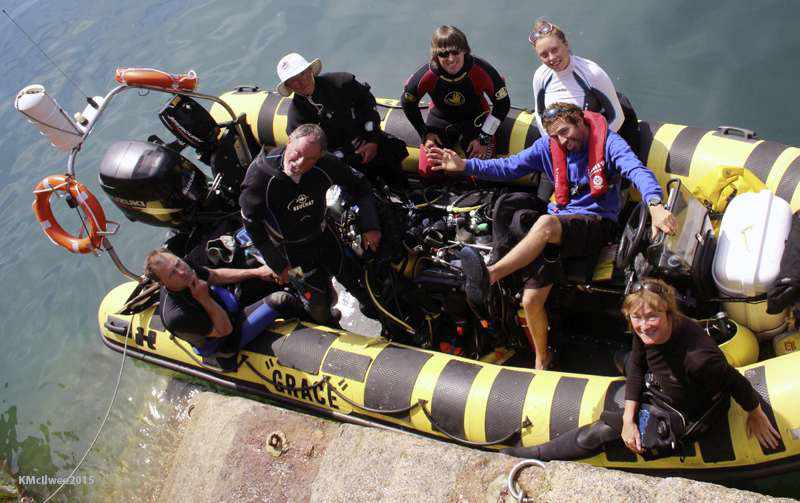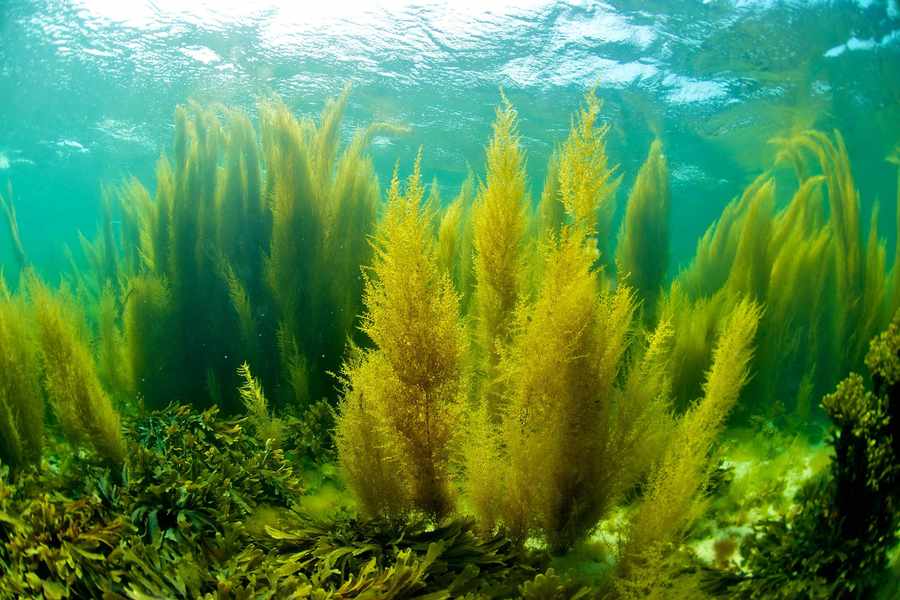With a landscape that features green fields, woods, rugged coastlines, sand dunes and beaches, there are a thousand and one places where animals can find refuge. And according to Jersey Sea Search, the Island’s underwater environment may be just as exciting.
The group are three years in to a detailed five-year study of Island waters and the creatures and plants that live in them. By surveying underwater habitats, the team are building a picture of what life is supported and what changes are occurring in our underwater ecosystem. Diving trips usually involve 45-minute sessions beneath the waves, photographing and recording different species of plants and animals.
Last year project leader Kevin McIlwee spoke about the damage being done by the dredging of Jersey’s maerl beds – coralline red algae – which support a huge range of life.
Talking about a series of recent dives, he said: ‘We’ve seen at least half a dozen species not recorded in these waters before. From a tourism point of view, the more we explore our waters, the more we realise that we’ve got this huge potential to attract divers to the Island.

‘If you look at the global diving market, there’s a lot more conservation diving going on. The more we can demonstrate how important our Island is, the more important Jersey will become as a diving destination.
‘We went to look at a new site that has not really been dived before – it was perhaps visited 25 years ago – in an area called the Dirouelles, mid-way between the Paternosters and the Ecréhous reef. The sea there was beautiful, with clear water and white sand and large rocky outcrops with all sorts of creatures on them. Because the water was so clear, these creatures were easy to spot and we got some superb photographs of them.’
The information gathered by the team of marine experts and volunteers is fed in to a national biodiversity network database in the UK. That information is also used by Jersey’s Environment Department and the Société Jersiaise’s marine biology section.
Since the first survey of 2013, Jersey Seasearch has added more than 11,000 species reports to the Island’s and UK’s official species records. Mr McIlwee said that the group were also trying to change the perceptions that Jersey was a marine conservation ‘black hole’ – a phrase used to describe the Island at a recent conference.
‘Sadly, dredging continues to destroy the sea-bed and the huge slipper limpet beds discovered outside Bouley Bay,’ he added. ‘This is year three of the project. Ideally we like to go to places we haven’t been to before, but we’ll also go back to places that we have visited.
‘What we are finding is that as the years pass, temperatures can vary. We are certainly experiencing quite high water temperatures, which unusually don’t come until later in the year. That’s affecting the species that are coming to our waters. And as temperatures rise, we may see some more southern species arriving.
‘What we are trying to do is built a more accurate picture of the species within our waters and the habitats these species are living in. We are particularly interested in species that are new to our waters that might indicate climate change and a rise in water temperature. So we’re trying to photograph all different types of things.
‘Some anemones are indicative of a rise in temperatures, and certain types of anemones are moving north as water temperatures rise.’

To reach the Island’s largely unexplored underwater offshore reefs, Jersey Sea Search use a rigidly inflatable boat to take their team to different locations.
Dives are carried out in groups of two or three, with different specialists helping with the survey process.
At the moment the survey team includes seaweed expert marine biologist Dr Lin Baldock, renowned underwater photographer Sue Daly, local mollusc and geology expert Dr Paul Chambers and Islander Sam Blampied, who recently gained a degree in marine biology.
Groups dive for about 45 minutes using wet-suits or dry-suits to keep out the cold. They use special underwater cameras and writing equipment to record the different species.
Jersey Sea Search works closely with the Société Jersiaise marine biology section to build a picture of life beneath the waves. But with a single reef survey costing up to £3,500, funding can be a problem.Mr McIlwee said he was grateful for significant sponsorship from private wealth firm Nedbank. He also praised the Bouley Bay Dive Centre for helping to make the project possible.
- Nudibranch. Sometimes referred to as sea slugs, these creatures are marine gastropod molluscs that shed their shells after their larval stage.
- Dahlia Anemones. Mr McIlwee said that almost every type of anenome that can survive in our waters was found, including a huge wall of the Sunset Cup Coral not seen north of the Channel Islands.
- Bryozoans. These are filter-feeding creatures which sieve food from seawater using retractable tentacles.
- Hydroids. Part of the life stage cycle for most animals of the Hydrozoa class, which are small predators related to jellyfish.
- Pollock. Large numbers of sizeable pollock have been seen, according to Mr McIlwee.
- Slipper limpets.
- Cuttlefish.
- And a new Paleozoic site near the Sauvage Reef was seen, which could later yield new information about the period.[/breakout]





